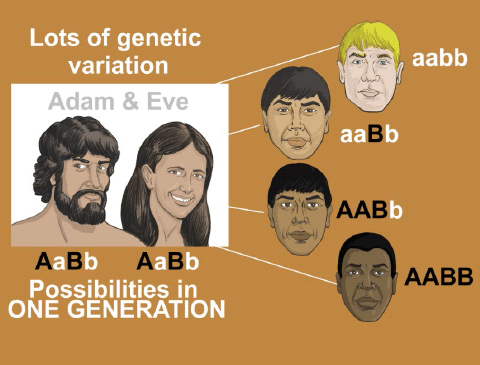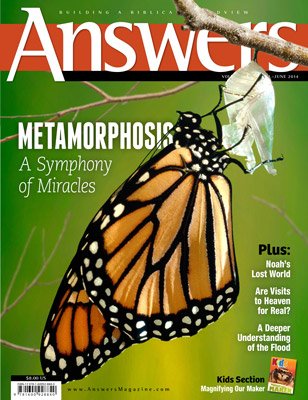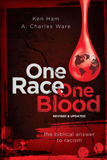How Many Races Did God Create?
Creation Basics
Some people think the Bible justifies their racist attitudes. Yet when we examine what the Bible says about the origin of different people groups, we find a different story.
It’s easy to see that people come in all shapes and sizes. Some are short, some are tall, some have red hair, some have brown hair, some have big noses . . . well, you get the idea. It’s an amazing variety of people.
Despite this variety, we tend to group people according to one or more physical features they share in common. These groups are often called “races,” and the features that define them, “racial characteristics.”
Many people treat others differently, depending on these supposed racial characteristics. They believe those differences are more than just skin deep and have implications for their value as human beings, and even their place on the “evolutionary ladder.” Is that justifiable? How many “races” of people are there? How did they come to be, and do these differences justify prejudice?
A Biblical Basis
God’s Word settles this issue. There is only one race of people. This is clear from the history found in Genesis.
In the beginning God created the first man, Adam. Then He created the first woman, Eve, from the man’s side. Adam and Eve were our original parents, made in the image of God. All humans can be traced back to these two people. This is made abundantly clear in Genesis 3:20, where Adam said that Eve “was the mother of all living.”
So, if we are all descendants of Adam and Eve, we should all look pretty much the same, right? How can we explain all the differences in people?
The Tower of Babel
Genesis 11 describes a time when humans rebelled against God by settling at Babel and refusing to spread out in the world. Because of this, God confused their language, and groups of people separated and moved away from one another.
As a consequence of Babel, the people groups became genetically isolated.
As a consequence of Babel, the people groups could not easily mix. They became genetically isolated, meaning that they married and had offspring primarily within their particular group. As the years passed, each group developed its own culture and ways of doing things. Genetically isolated, certain physical traits became more prominent in each group. These ethnic characteristics are wrongly considered racial characteristics; but there really is only one race, the human race. All of these people were simply people.
Skin Color
Let’s use skin color to illustrate the process.
The pigment primarily responsible for everyone’s skin color is melanin. Ultimately, everyone has the same skin color—we just have varying skin tones. The two forms of melanin are eumelanin (brown to black) and pheomelanin (red to yellow). Their proportion determines skin tone.
So what would cause some people to have very dark skin while others’ skin is lighter? Where they live makes a difference. For example, darker skin on people living in regions near the equator protects them from intense sunlight, reducing their risk of skin cancer. People in higher latitudes where there is less intense sunlight need lighter skin to produce vitamin D efficiently. In each case those who had the characteristics conducive to living in the region stayed and reproduced. Those who didn’t either moved on or died out.
Over many generations, these favorable characteristics would be carried forward in the gene pool, and the less favorable characteristics would tend to fall away. Thus, genetic variability in isolated populations gradually decreases. So today people with very dark skin usually have children with dark skin and people with very light skin usually have light-skinned children.
However, people with “middle brown” skin often have children with a much wider range of skin tones. Why? Because these “middle brown” people groups still have significant genetic variability with regard to skin tone.
Based on our understanding of the inheritance of skin tone, we strongly suspect Adam and Eve were middle brown. This would give the widest range of skin tones in their offspring, from very light to very dark.

Racial Characteristics
Beyond skin tone, other characteristics are used to distinguish one group of people from another. These include straight versus curly hair, thickness of lips, and the shape of eyelids. These features would have developed or become more prominent in various isolated people groups over the generations.
Regrettably, instead of giving glory to God for the differences between us, we fallen human beings use these features as an excuse to judge our fellow man. Why?
Evolution and Race
The problem is that most people, including many Christians, do not base their worldview and values on the Bible. Instead, they ignore God’s truth and adopt man’s ideas and values. This is always dangerous, but it may be most destructive in the area of human origins and its implications for social behavior.
The most prominent view of origins today is called evolution. According to the evolutionary worldview, humans evolved from an apelike ancestor over millions of years. Unfortunately, many have used this philosophy to teach that different people groups evolved at different rates. This allowed them to consider some people groups “less evolved” than others, some “races” closer to apes than others (always putting their own “race” at the top of the scale, of course).
While evolutionary thinking certainly intensifies racist attitudes, evolution is not the cause of racism. The cause of racism is sin. Man’s inhumanity towards his fellow man has existed since the Fall. The very first sin recorded after Adam took the forbidden fruit is Cain’s murder of his brother Abel; and a few verses later in the same chapter, Lamech actually brags about killing a man.
However, evolution has been used as a justification for racism. The late Harvard professor Stephen Jay Gould said, “Biological arguments for racism may have been common before 1859 [the year Darwin’s On the Origin of Species was published], but they increased by orders of magnitude following the acceptance of evolutionary theory.”
Modern Genetics
Evolutionary ideas about the races, taught for many decades, are now so ingrained in some people’s thinking that it is nigh impossible to correct their misperceptions. But in truth all humans are fully human. No group of people is less evolved than another. In fact, the genetic difference between any two people is only about one-tenth of one percent, trivial at best. Interestingly, genetic variation among people within a particular ethnic group is often greater than between members of different ethnic groups!
Scientists involved with mapping the human genome have declared that there is only one race—the human race. Some have even said that the term race is meaningless.
One Blood
God’s Word is clear. There is only one race.
Acts 17:26 reads, “And He has made from one blood every nation of men to dwell on all the face of the earth, and has determined their preappointed times and the boundaries of their dwellings.
”
We can rightly talk about people groups, but only with the understanding that these groups represent what the Bible refers to as “tribes” or “nations.” People do have ethnic and cultural heritages that can be honored and celebrated.
But we are all one blood. Even in the midst of our differences, we are all the same.
The Consequences
The idea of races calls us to ask a serious question: if there are different races, then which race did Christ die for? The answer has eternal consequences.
All human beings are related. We all can trace our ancestry back to the first man, Adam. As descendants of Adam, we are all sinners. As sinners, we are in need of a Savior (Romans 5:12).
Jesus Christ, the Last Adam, was born as a man, as a descendant of Adam (1 Corinthians 15:45). Because of this birth, He was able to serve as our Redeemer. He was crucified, died, and rose again. He
overcame death, and those who put their faith and trust in Him need not fear death, for they inherit eternal life. “For as in Adam all die, even so in Christ all shall be made alive
” (1 Corinthians 15:22).
Answers Magazine
April – June 2014
A closer look at the Genesis Flood account reveals a beautifully written, unified narrative that points to one inspired author. The passage masterfully highlights one central message: “God remembered Noah.” Along with in-depth articles on the Flood, this issue shows biblical and historical evidences of Christ’s Resurrection, new discoveries about the miracle of a butterfly’s metamorphosis and much more!
Browse IssueRecommended Resources

Answers in Genesis is an apologetics ministry, dedicated to helping Christians defend their faith and proclaim the good news of Jesus Christ.
- Customer Service 800.778.3390
- Available Monday–Friday | 9 AM–5 PM ET
- © 2025 Answers in Genesis





